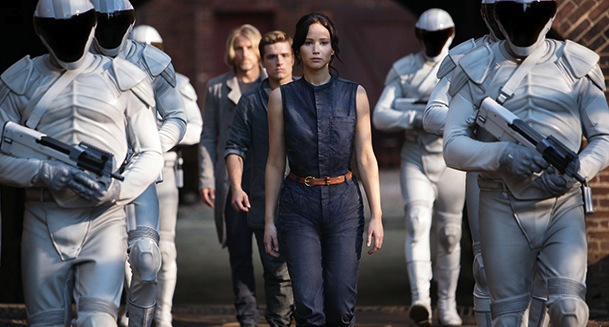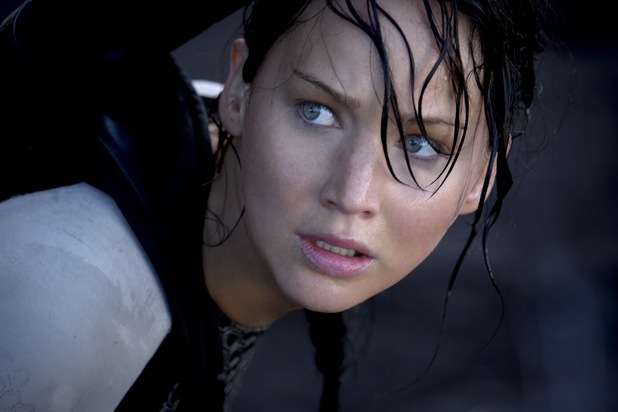This is your chance to discuss the week’s amateur scripts, offered originally in the Scriptshadow newsletter. The primary goal for this discussion is to find out which script(s) is the best candidate for a future Amateur Friday review. The secondary goal is to keep things positive in the comments with constructive criticism.
Below are the scripts up for review, along with the download links. Want to receive the scripts early? Head over to the Contact page, e-mail us, and “Opt In” to the newsletter.
Happy reading!
TITLE: Capital Punishment
GENRE: Action/Sci-Fi
LOGLINE: An attorney travels back in time where he battles corrupt FBI agents in a race to save his brother’s life.
WHY YOU SHOULD READ: In preparation for my upcoming free ebook, I dug up all the scripts I ever wrote. This was collecting dust in a box. I wrote it 20 years ago and only showed it to a few people before moving on to another script. Starting with its title, CAPITAL PUNISHMENT is a throwback to the Arnold Schwarzenegger films of the eighties.
TITLE: Benevolence of the Butcher
GENRE: Action
LOGLINE: When a group of bank robbers risks their own safety to protect a woman who is shot at the front door of their hideout, they are attacked by an unrelenting army determined to kill everyone who helped the wounded stranger.
WHY YOU SHOULD READ: This is a story about a group of six people who must ask themselves how much they are willing to sacrifice to help others. When universal healthcare, the one percent, and wealth redistribution are buzz words on every news website, a story that asks us what it really means to live in a capitalistic, competitive world and what we must be willing to give purely for the sake of our fellowman is a narrative full of questions I believe are worth asking. This theme is explored with nonstop action and in one location for a marketable film at a very reasonable budget.
This is the sixth draft of my ninth screenplay and I am finally confident enough to give the readers of SS a look. I am hoping to learn a lot from the comments of everyone and hopefully everyone willing to read it will learn something as well.
TITLE: MOTHERF—ER
GENRE : Comedy
LOGLINE: As Matthew and Helen get involved in a steamy affair, they must keep their secret from one person: Rachel, Helen’s daughter and Matthew’s best friend.
WHY YOU SHOULD READ: I know you’ll like it because this is a comedy that has a very strong hook with a lot of built-in conflict. It also goes to unexpected places and the feedback I’ve received from reader around town is that the characters and the relationships are well-developed. Also, at 96 pages it’s a very quick and easy read.
TITLE: MUK
GENRE: Horror
LOGLINE: A knife wielding serial-killer harvests human souls for Hell, and his name is MUK.
WHY YOU SHOULD READ: I’ve wanted to write a slasher film ever since I saw Halloween in my early teens. I’m in my early forties now and I’ve finally done it. I’ve taken everything I know, love and loath about the sub-genre and put it into this script, which took me about eight months to complete. I am proud of what I accomplished and I think horror fans will love it.
This script is not for the meek or weak of heart. It’s a brutal story. A lot of people die and badly. Ye been warned.
TITLE: A Lot of Blood
GENRE: Contained Thriller
LOGLINE: After two friends leave the bar after a night of drinking, they discover their car missing
from the parking lot, an RV in its place, and a woman trapped inside.
WHY YOU SHOULD READ: Coming from a fiction background has been challenging. But, I have worked with Victor Miller to find my voice in terms of saying what I want, and saying what the audience wants to hear. I think there is so much more that a story can tell that goes beyond the page and beyond the stage.
Happy Scriptsgiving everyone! While this masquerades as a day to spend with family, I think we all know (especially those of you with 9 to 5 jobs) that once the dinner ends, it’s an entire night to work on your latest script! Which is why I decided to put you in the script mindset. One of the coolest things bouncing around the screenwriting community these days is this info graphic. This guy’s a reader who read over 300 scripts and broke them down via tons of criteria. Some of the conclusions are enlightening. Some are shocking (10% female writers?). I’m kinda jealous actually. I wish I’d logged all this stuff in an excel spreadsheet myself. A sample size of 6000 would’ve allowed us to conclude some very definitive trends in screenwriting. Anyway, I’m including a smaller graphic below. Click here or on the picture to get a more detailed look. What do you guys think?
Genre: Crime/Mob Drama
Premise: (from Black List) A gritty, contemporary retelling of THE COUNT OF MONTE CRISTO set in the underworld of the Hell’s Kitchen Irish mob.
About: This script finished with 4 votes on the 2008 Black List. It was later purchased by Phoenix Pictures, which has made Black Swan and Shutter Island. The idea is to make an underground crime/mob film in the style of Heat. It’s unclear where the project is now in the development process. The writing team of McGreevey and Shipman have since moved into television, creating and working on the series “Hemlock Grove” on Netflix.
Writers: Brian McGreevey & Lee Shipman
Details: 125 pages
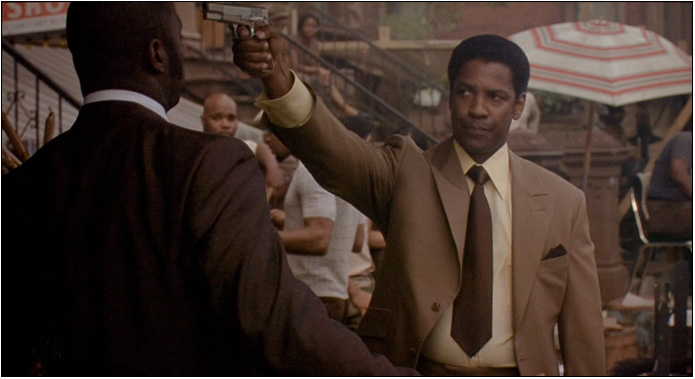 While this script wasn’t for me, I fully admit that if you put Denzel Washington in it, it’ll be an instant hit!
While this script wasn’t for me, I fully admit that if you put Denzel Washington in it, it’ll be an instant hit!
Oh man. I always get sucked in by the “Monte Cristo” angle. “Oh yeah, sure. Monte Cristo storyline? I’ll read it!” Dingbat. How come I keep making that mistake?? Hindsight is 20/30 but I didn’t even need glasses to know that this genre wasn’t my thing. Never has been. The names. Ahhh, the names! They’re all the same! Jimmy and Jerry and Eddie and Jackie. Who’s who? Who knows! Every time, it happens. I don’t know if it’s because these scripts aren’t my thing or if these stories just don’t translate on the page. But I feel like I should’ve known better.
And I wanted today to be a happy review day! With Thanksgiving coming up, I’m going to be gone until Monday. So I wanted to leave a spec rainbow behind me. I had this vision of thousands of screenwriters being inspired then racing to their computers to finish their scripts this weekend. The whole reason I pluck these old scripts out of Forgottenville is in the hopes of finding that shiny overlooked gem. “Once Upon A Time” was essentially in the same spot on the Black List as Chris Terrio’s “The Ends of The Earth.” So I figured, we have a shot here. Oh, giblet sauce!
Anyway, so here’s the story. Finn Morgan and Eddie Donovan are best friends. One of them’s a good guy who’s going to be a lawyer (Eddie). The other is the next in line to control the city’s mob (Finn). Since their friendship wouldn’t be complete without a woman, we’ve got Molly, who’s with Eddie, but who Finn is clearly in love with. I think we know where this is going.
Finn kills a really important dude in town and frames Eddie for the murder, all in a not-so-subtle attempt to make Molly his own. When Eddie is then murdered in prison, Finn’s home free with his plan-o-love, and Molly reluctantly hops aboard the Finn Express.
Too bad the train stops at Eddie-is-still-alive Station! Yup, Eddie befriends some old guy in prison who helps him dig a hole out of the place and escape. It’s a little confusing why Eddie was mistaken to be dead in the first place, but a lot of that had to do with the fact that there’s so many people and so many things going on in the script, it’s hard to keep up.
One of those things is that we’re jumping back and forth between two different timelines, one set in the present, when Eddie comes back from prison, and one set 15 years ago, where we see Eddie betrayed and sent to prison. Tons of characters and lots of intricate storylines are hard to make clear on their own. Add intercutting time lines and we’re talking a whoopee cushion of confusion. Not to mention we’re also flashing back WITHIN the present time period, adding yet another timeframe to keep track of. Ouch. My head hurts!
Eventually, after we see all this stuff take place over about 90 pages, it becomes a revenge tale, with Eddie wanting to get payback for being framed by his supposed buddy (and losing his girl!). I kept waiting for the big Monte Cristo hook to happen, where Eddie got rich and powerful, but it never happened (sad face emoticon). Instead, the Monte Cristo thing was limited to an old man helping Eddie escape prison.
This script was a bit like Thanksgiving Dinner. You’re excited at first. You get to see all your family and how everyone’s doing and enjoy a nice meal. But it soon turns into a confusing mess where parents are asking you what you’re doing with your life and pointing out all of your mistakes and telling you to save money, leaving you feeling confused and frustrated. Okay, so it’s not exactly like a Thanksgiving Dinner. But I’m trying to tie in the holiday dammit.
Or wait. Maybe it’s more like Black Friday. You show up at 4 a.m., wait in line. Everyone is excited about all the great discounts they’re going to get so you all become best friends. Then the doors open and everyone becomes animals, out for themselves. Pretty soon you don’t know where you are or why you even came in the first place. The day ends up with you sitting in the video game section covered in discount games screaming “Why!! WHYYYYY????!!!.” Hmmm. Don’t know if that was much better.
Okay, outside of the obvious, that this script was so freaking hard to keep up with (I don’t feel like the writers had ever read a script before – if they had, they’d have known how difficult this was to read), it simply didn’t move fast enough. The big plot moment – when Finn frames Eddie – doesn’t come until page 57. FIFTY-SEVEN! The movie’s halfway over by that point. That moment should’ve happened on page 17.
And the reason it didn’t is because the writers committed to this dual time-frame approach, which I’m thinking was a mistake. Essentially, for 56 pages, we’re given backstory on how these guys are friends. Backstory is story that stands still. Present story is story that moves forward. There are examples of backstory being interesting (Lost did this well) but it’s almost always a fool’s game. Audiences are interested in the here and now. And even more interested in what comes next.
I would’ve gotten to the betrayal quicker, shown Eddie adapting to life in prison, shown the breakout, then shown him rise up the ranks in the gang, possibly as a different person, then kill Finn. Although I guess that’s sort of like Gangs of New York, so maybe you play with it more. The point is, do something where the story is always pushing forward instead of always jumping back.
Which brings us back (ironically) to dual timelines. This approach is notoriously harder to pull off because a) it’s more complex and b) because you’re covering two stories, it takes you twice as long to get to everything. A few weeks ago we covered a dual-timeline script that worked – Fathers & Daughters – and a big reason for that was that it was a simple story. Just two characters. So jumping around didn’t confuse anything. Here, there’s so much going on that when you added the jumping back and forth, it became too much to bear. I think you need to think long and hard about using the dual-timeline approach. What is your reason for doing it? If it’s stylistic or “different to be different,” drop it. But if you think it’s absolutely positively essential to telling your story (no other way will work better), that’s when you do the dual-timeline.
Somewhere, buried inside this script, is a good story. But right now it’s more complicated than it needs to be. I’m sure there have been some rewrites since. Hopefully they addressed these issues.
[ ] what the hell did I just read?
[x] wasn’t for me
[ ] worth the read
[ ] impressive
[ ] genius
What I learned: Read scripts. By reading scripts, you understand where readers get tripped up and you’re able to avoid those pitfalls. Writers who don’t read scripts tend to overpopulate their stories, over-complicate their plotlines and write vaguely. That’s how “Once Upon A Time” read to me. If you don’t have access to scripts, ask some of the folks here in the comments section for help. They can get you some of the scripts that are floating around out there.
It’s Thanksgiving so what better movie to extract 10 screenwriting tips from than “Planes, Trains and Automobiles!” Okay so there weren’t a lot of movies to choose from (it was either this or Pauly Shore’s “Son In Law”). Still, any time I get to break down a John Hughes script, I’m a happy man. The thing about Hughes is that he came from a marketing background. So he understood the fact that people have short attention spans. They don’t like to be confused. And they like to understand what they’re getting into. Which is why he kept all of his films easy to understand and, therefore, easy to market. The road trip film is a cinema staple. But its biggest strength (the fact that it’s so simple) is also it’s biggest weakness (it’s hard to make unique). Still, at its core, these kinds of films were built for screenwriters. The road trip angle gives the script a clear goal and forward momentum, and the contrasting personalities gives the script natural conflict. All you have to do is come up with a few interesting characters and scenarios we haven’t seen before. From what I hear, Hughes shot a TON of footage to ensure just that (twice the industry average actually) and there’s rumored to be a 3 hour cut of Planes, Trains and Automobiles somewhere in the Paramount film vault (this cut is 90 minutes). I live about four blocks from Paramount so maybe I’ll head over there before the big turkey day and see if I can find it.
1) If you don’t have a ticking time bomb in your road trip movie, you probably don’t have a road trip movie – If your characters are heading to a destination in your script, they should need to get there by a certain time. And it should constantly look like they’re not going to make it. Here, of course, our characters are trying to get home by Thanksgiving.
2) Look for the visual jokes in these movies – Writers get caught up in the humorous back and forth between their characters when they write road trip movies. It’s all about the dialogue between the leads. But remember, the visual jokes tend to be the ones that hit the hardest. There’s no better laugh in “Planes, Trains and Automobiles” than when Steve Martin finishes his shower only to see that John Candy’s used all the towels and the only dry one left is a tiny washcloth. Never underestimate the power of visual jokes that are just WAITING to be found.
3) The idiot shouldn’t think he’s an idiot – With Will Ferrell and Zach Galifianakis films becoming so popular, self-aware comedy has become huge. But remember it’s not the only way. Some of the funniest characters are the characters who have no idea that they’re grating, that they’re smothering, that they’re annoying, that they’re rude. The idiot shouldn’t always think he’s an idiot. He should think he’s the smart charming guy. That’s what makes John Candy’s Del Griffith so memorable. He has no idea how annoying he is.
4) If characters are stuck together, they better really be stuck together – What drives me craaaaazy in these scripts is when writers keep their characters together for no logical reason at all. If there’s a moment where characters would logically split up, you either have to come up with a believable reason why they don’t or you should split them up (and reunite them later somehow). That’s what happens here. They finish the bus ride and, during lunch, Steve Martin just says, hey, there’s no reason for us to be together anymore. And they go their separate ways.
5) The two things a buddy road-trip movie MUST have – When you write these movies, there are two things you must adhere to. Assuming, of course, you already have two characters with friction between them, the first is that things need to KEEP GETTING WORSE for these characters. At first it’s the plane being diverted to a different airport. But later it’s getting robbed. Later still it’s blowing up a car. And the second is that the IRRITANT character needs to KEEP GETTING MORE IRRITATING. At first John Candy’s just leaning on your shoulder on the plane. But later he’s sleeping on you with his hands between your legs. And later still, he almost kills you by slipping your car between two semis.
6) Give your comedy more leeway by avoiding caricatures – I learned this one from critic Leonard Maltin. He noted that the reason this movie’s occasional slapstick scene (them nearly crashing into two semis) didn’t disrupt the film’s more serious tone, is because neither main character was a caricature. They both had real goals, real lives, real backstory, real emotions, real frustrations. They were genuine. And because we believed them as people, we bought into the sillier parts of their adventure. Had they been hamming it up for the screen and thinly drawn and “caricatures” of real people, the movie would’ve quickly devolved into empty nonsense during those sillier moments.
7) Caricatures work great for one-scene characters though – One place to go wild with caricatures, however, is with one-scene characters. These guys don’t need to be deep, so you can have fun with them. Owen the redneck Truck Driver (“My wife’s so strong her baby came out sideways and she didn’t even scream”) is a great example.
8) If your story’s fast, write fast – This is by no means a hard and fast rule. Every writer should develop a method that works for them. But there’s something to be said for writing fast when your story’s time frame is fast. This story takes place over three days and John Hughes wrote it in three days. There’s something about the energy you write with when you’re writing fast that matches the energy of a fast story. Keep in mind, though, that Hughes routinely does 20 drafts AFTER his first draft.
9) Write that scene an actor is going to love – Steve Martin, who was really hot at the time of this movie, said he signed on because of two scenes. The scene where he curses out the car rental attendant with 18 “fucks” in one minute, and the “seat-adjustment” scene in the car. You have to be thinking of your actors when you write because actors are the number one element for getting your script purchased. What scenes in YOUR script will an actor be dying to play?
10) Write the dramatic version of your comedy first – Again, I don’t think every comedy should be written this way, but I know Judd Apatow does it a lot (and tells all his writing disciples to do as well). To make sure the emotional beats are there, the reality is there, and the characters are authentic, write the DRAMATIC version of your comedy first. Then, as you rewrite, start looking for and adding jokes. Although I have zero evidence to indicate this is how “Planes, Trains and Automobiles” was written, it sure feels like the kind of movie that could’ve been written that way.
Genre: Sci-fi
Premise: (from IMDB) Katniss Everdeen and Peeta Mellark become targets of the Capitol after their victory in the 74th Hunger Games sparks a rebellion in the Districts of Panem.
About: This is the second film in The Hunger Games franchise, a set of films adapted from writer Suzanne Collins’ novels. The first film was a huge surprise hit, grossing over 400 million domestically, and turning its star, Jennifer Lawrence, into a household name who is now the most sought after actress in Hollywood. Catching Fire came out this weekend and grossed 170 million dollars domestically, a little more than the original film did on its opening weekend. The Hunger Games represents a huge shift in the business, with every production company and their mother trying to get their hands on the next big female-driven sci-fi YA novel franchise. As Hollywood is prone to do, the saturation of the market is already beginning to destroy it. Terrible films like The Host and the awful-looking Divergent are dampening audience enthusiasm for the trend. Despite this, The Hunger Games continues to thrive and until it’s over, studios will probably continue to develop these projects.
Writers: Simon Beaufoy and Michael Arndt (based on the novel by Suzanne Collins)
Details: 146 minutes long!
One of the things I find strange is that despite The Hunger Games now being one of the premiere franchises in Hollywood, and despite the full-on media blitz they’ve put together the last few weeks to make everyone is aware of the latest incarnation reaching theaters this weekend, nowhere can you find an interview with the screenwriter of the film.
That’s because The Hunger Games, and movies like it, represents one of the most thankless screenwriting jobs in Hollywood. Sure, you get to write one of the biggest movies of the year, but all the credit will go to the two people who sandwiched you in the process – the author of the original book, and the director who put the movie on the big screen.
To that end, that middle cog, the screenwriter who adapts these huge books, is allowed little to no creativity. His job amounts to that of a translator. Maybe that’s why Catching Fire feels so empty inside. Its two talented screenwriters, Simon Beaufoy and Michael Arndt, weren’t allowed to do anything but translate. And it’s left this movie without a soul.
A few months have passed since the last games. Katniss, our heroine and winner of the 74th Hunger Games, is now being asked to go on tour with her co-winner, Peeta, to use their celebrity to distract all the districts from the fact that they’re all hungry and miserable, which is a common theme throughout the franchise.
Now for those who don’t remember, there can only be one winner of each games. But Katniss and Peeta, buddies from the same district, bucked the system and “co-won” the Games, to the dismay of the country’s prickly President Snow. In an arrangement of backstory so complicated I couldn’t begin to explain it in one post, Katniss must pretend to the public that she loves Peeta, even though she secretly loves another guy back in her district. Peeta, on the other hand, is desperately in love with Katniss.
After going on tour, the big bad president decides that Katniss is becoming a symbol for rebellion and announces a “Survivor All-Stars” version of the Hunger Games, bringing all the former winners back to fight each other to the death. Katniss and Peeta are, once again, thrust into the games. And the prez is hoping that both of them will be killed once and for all. But when the normally distant Katniss starts making allies, everything about the president’s plan starts to fall apart.
There’s this saying in professional sports that you want to be either really good or really bad. Really good cause you can win it all. Or really bad so you can rack up high draft picks and turn your team’s fortunes around. What you don’t want to be is stuck in the middle, one of those teams that’s never going to threaten for a championship but is too good to ever get a high draft pack. You will be perpetually mediocre for the entirety of your existence. Catching Fire, I’m afraid, is a team stuck in the middle.
There simply wasn’t anything that stuck out with this film. The emotional beats were never high enough. The kills were never violent enough. The twists were never shocking enough. Everything was right down the middle.
That’s something that bothered me about the first one also, but the first one had an ace up its sleeve. It had a great concept. A bunch of children being forced to kill each other for the entertainment of others. This script doesn’t have that luxury. The competitors Katniss and Peeta play against are adults now, which makes this less unique.
And maybe they could’ve made that cool IF the personalities of these competitors were big and exciting enough. But they weren’t. In fact, Haymitch’s (Woody Harrelson) description of everyone was way more exciting than the competitors themselves. He goes on and on about a girl with fangs, for instance, yet we never see fang girl in the actual games! Or we’re told about this really dangerous brother and sister team – yet the two die before they can tie their shoes! Or we’re warned about this “really weird” husband and wife team. Except the only weird thing about them is that the woman talks to herself sometimes. The guy’s not weird at all.
That’s what’s beginning to bother me about this franchise. There are so many promises that aren’t being kept. I mean, The Hunger Games are supposed to be this violent battle to the death, but the death is by fog and bee’s nests and drowning. I understand that this is PG-13, but if you’re selling “brutal” and give us “cuddly deaths” instead, you can see why we might be upset.
Another thing that ticked me off was the script’s shift away from immediate storytelling to “franchise” storytelling (a.k.a. setting things up for the 3rd and 4th movies). The Hunger Games was a self-contained movie. Catching Fire is more about the beginnings of a revolution we’re not going to see for another 2 years. Cliffhangers are wonderful when you get to watch the next show a week later. It’s not so fun when entire birthdays are passing before you get to see the next episode.
Also, once you start setting things up for other movies, the most important aspect of storytelling – only including what’s relevant to the story – gets tossed aside and your narrative becomes bloated. Joss Whedon is a huge opponent of this approach for this very reason, which is why he said, “Let’s just make a great Avengers movie and let the sequels figure themselves out when we get there.” I agree with him. Just make each individual movie work. Don’t tell me, “Oh my god, I have to go save my sister!” And then cut to black.
Even if you strip all these problems away, Catching Fire still has issues. This love story thing has never made a lot of sense. She has to pretend she loves Peeta so the public will what? Root for the power of love? Have hope? I don’t even know. And it’s a huge plot point since they keep talking about it all the time, which only makes it more frustrating that it doesn’t make sense. Tack on to that how the third variable in the love triangle isn’t even around. How can you have a love triangle if one of the parties isn’t even there? And then, of course, there’s zero chemistry between Katniss and Peeta. Watching the two make out is like watching your best friend kiss his sister. Although admittedly, it’s not clear if this lack of chemistry is due to the writing or the actors.
I hate to generalize but the “YA” label is so appropriate here. “YA” stands for safe choices, a simplified story, and a lack of sophistication. That’s what Catching Fire is. And I get that there are statements being made in the story about society and our obsession with celebrity and how it detracts from the real problems. But deeper themes don’t resonate unless the core story itself works. And the core story here is just so darn safe and comfortable, it’s hard to see this as anything more than the fast food of sci-fi movies.
[ ] what the hell did I just see?
[x] wasn’t for me
[ ] worth the price of admission
[ ] impressive
[ ] genius
What I learned: I think YA novel adaptations will only continue to become a bigger part of Hollywood as the self-publishing revolution continues and more and more people are writing these stories. But as far as the sci-fi/dystopian young female protag novels? These are going to die with The Hunger Games. Move away from this trend and start a new one. It’s always better to be the new guy on the block over the desperate dude chasing a dying trend anyway.


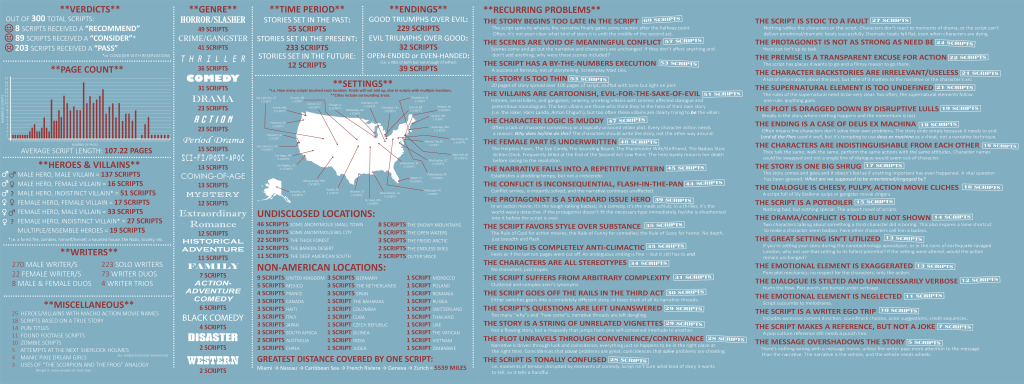
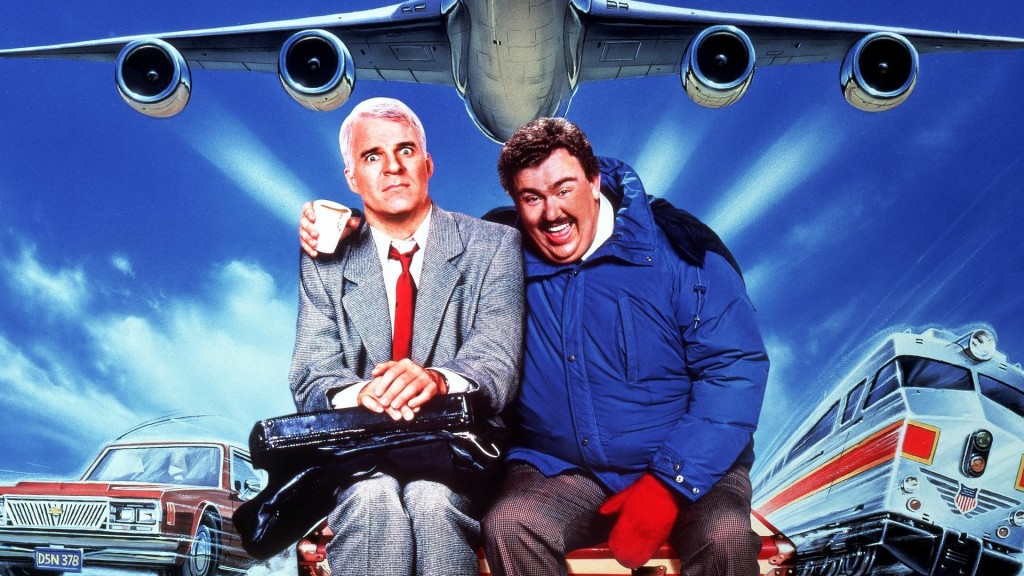
![planes-trains-and-automobiles-poster[1]](https://scriptshadow.net/wp-content/uploads/2013/11/planes-trains-and-automobiles-poster1.jpg)
